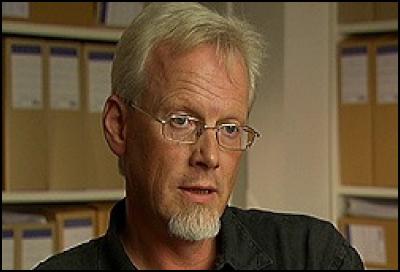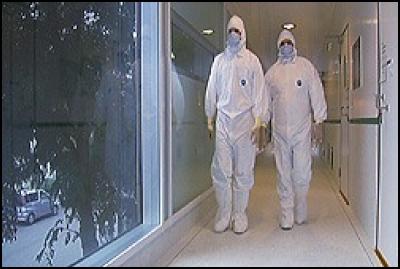[back]
Norway MENZB Doco: Exported Controversial Vaccine
Tuesday, 17 October 2006, 2:05 pm
Article: TV2.no
Exported Controversial Vaccine
A preview of a documentary that aired on Norwegian TV this morning (NZ time)

By Connie Barr, Karen Aarre and Kjell Persen
TV2.no Reporters
Translation of article from:
http://pub.tv2.no/TV2/magasiner/dokument2/article771764.ece
At the same time while Norwegian authorities were paying compensation to
vaccine victims, the same vaccine was exported to New Zealand and used on small
kids. To say it nice, they enlisted hundreds of thousands of small kids into a
gigantic experiment, says Jan Helge Solbakk, professor in medical ethics.
1988 started the largest experiment ever conducted on Norwegian population.
180,000 school teenagers were used as test subjects in the largest Norwegian
vaccine trial ever. It lasted from 1988 to 1991.
Norwegian Institute for Public Health was testing it's new vaccine against
meningococcus b, dangerous bacteria that kills 30 people every year in Norway.
The information brochure given to teenagers states: " it is unlikely to
expect serious complications ", while the information submitted to the
Norwegian Parliament states: " serious side effects can not be excluded "
during the experiment.

Jan Helge Solbakk, professor of medical ethics - Foto: TV 2
Jan Helge Solbakk, professor of medical ethics, was working on the ethical
sides of the trial. He claims: "project leaders knew that trial subjects may
suffer serious complications during the trial, statistically speaking."
"Trial subjects were not properly informed about the possibility of serious
side effects during the trial. We encouraged the project leaders, during an open
meeting, to do it in a better way, informative way" says Solbakk to Dokument 2.
- 512 side effects were reported during the vaccine trial.
- 14 were considered serious.
- 5 school kids developed serious neurological diseases.
During the second trial, involving 53,000 kids, 10 serious side effects were
reported, while 1 child developed serious neurological disease.
Worried about the side effects
Hans Cato Guldberg, professor of medicine, was a member of a committee that
was to evaluate side effects during the experiment. He was worried.
"Some time after the experiment was over, I came to a conclusion that there
were serious side effects to this vaccine. And, the number was relatively high.
I was worried. At the same time, I felt that project leaders were trying to tone
down the danger of vaccine, said Guldberg.
Results of the vaccine trial were compiled 1991. Vaccine was providing
protection in 57% of cases. That was not enough to add it to the Norwegian
vaccination program. As meningococcus b epidemic was dying out, vaccine was
never used in Norway the way it was meant.

Foto: TV 2
After the request from the World Health Organization (WHO), vaccine was
exported to New Zealand, during 2001. Using the same technology and the same
methodology from 1980s, researchers from the Norwegian Institute of Public
Health tailored a new vaccine for New Zealand. The multinational pharmaceutical
company Chiron was awarded rights to mass produce the vaccine.
Usually, vaccine is supposed to pass different tests before it is approved
for mass use on population. But this vaccine was tested in a record short time.
Phase III trials were totally dropped. Rare side effects are often not
discovered before the phase III trials. Phase III trials are randomized, placebo
controlled trials. Instead of testing this new vaccine through a new phase III
trial, safety data and affectivity data were just taken from the Norwegian
vaccine and assumed valid for the New Zealand vaccine. Because safety data of
this vaccine was incomplete, the vaccine was not officially approved on New
Zealand. Instead, mass vaccination of 1.1 million New Zealand kids started with
a temporary approval.
Breach of the international research ethics
In New Zealand, the Norwegian vaccine was used as guarantee that the New
Zealand vaccine is safe and effective. It was the Norwegian Institute of Public
Health that was the guarantor.
"First: Norwegian vaccine was not safe! Second, it is a serious overstatement
to say that vaccine is effective. Third: it is against international regulations
and against research ethics to start to vaccinate small children on New Zealand
with a vaccine that was tested on a different group of people, Norwegian school
kids. To say it nice, they enlisted hundreds of thousands of small kids into a
gigantic experiment," says Jan Helge Solbakk, professor in medical ethics."
Quote: "Some time after the experiment was over, I came to a conclusion that
there were serious side effects to this vaccine. And, the number was relatively
high. I was worried. At the same time, I felt that project leaders were trying
to tone down the danger of vaccine."
Hans Cato Guldberg, professor of medicine, was a member of a committee that
was to evaluate side effects during the experiment.
ENDS


